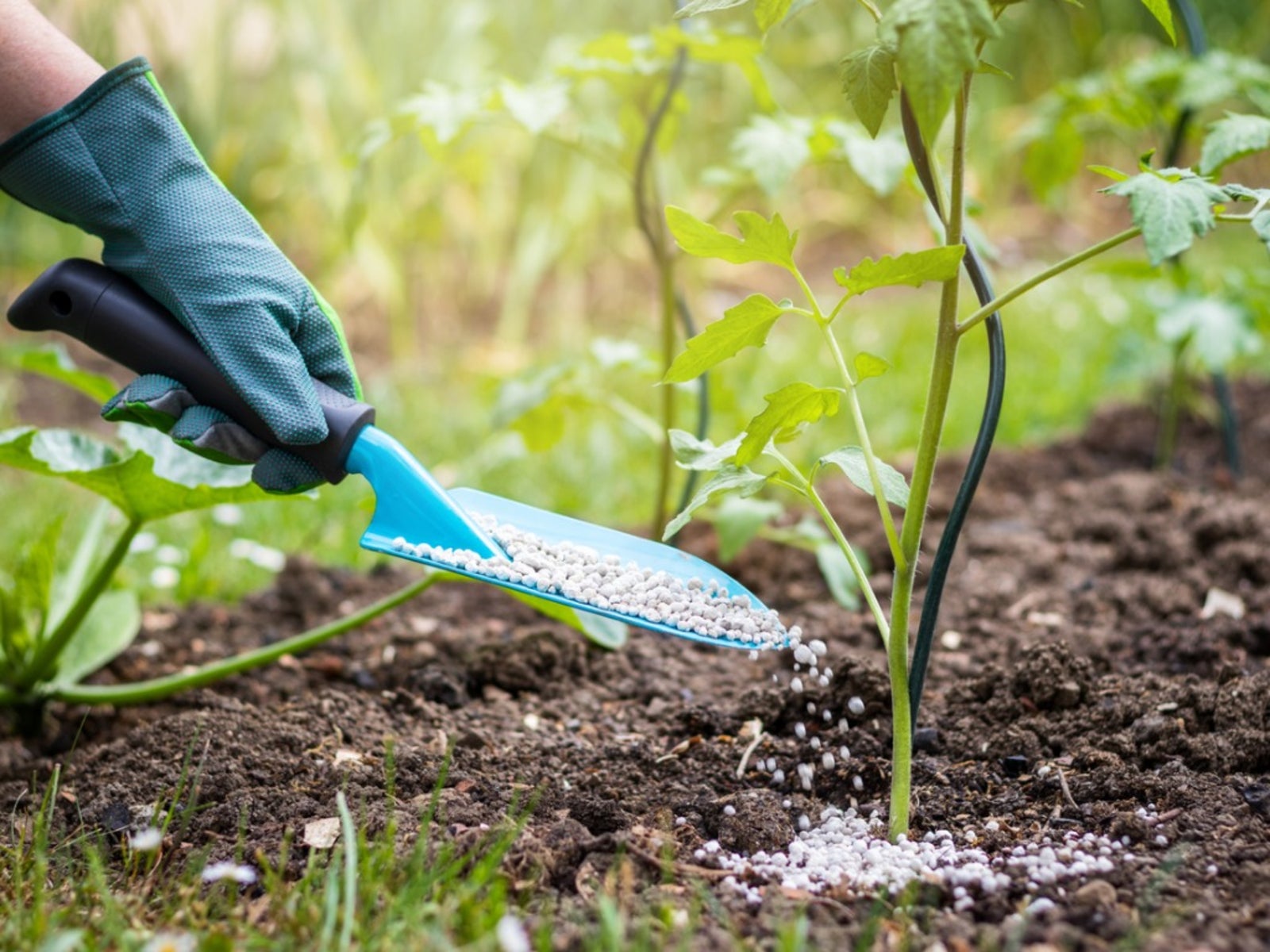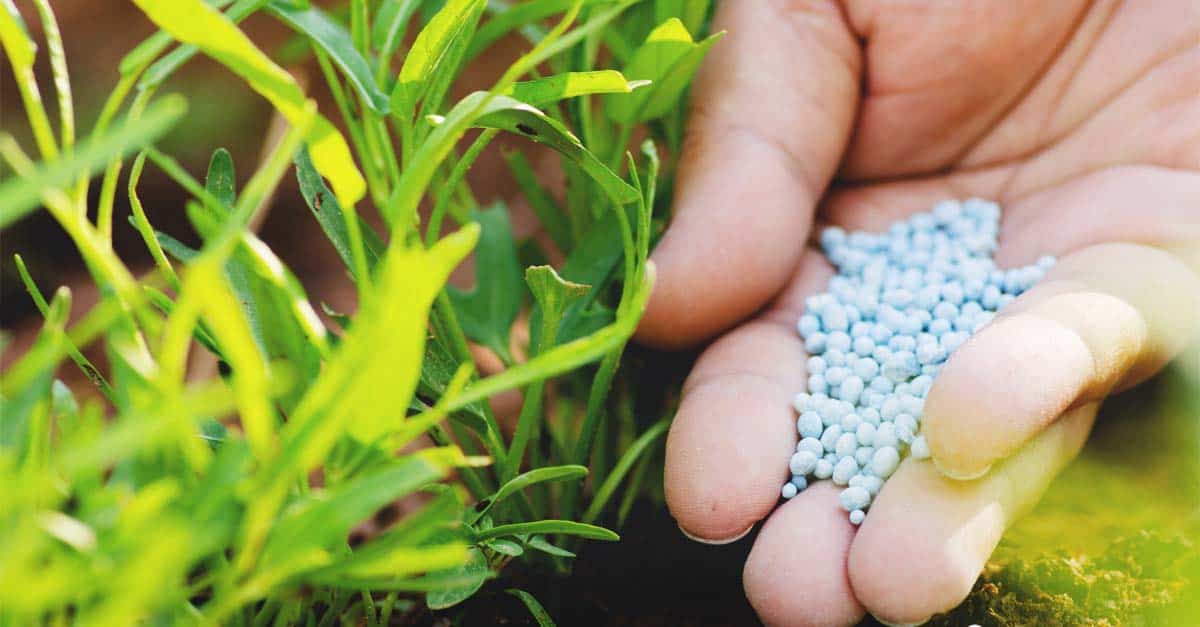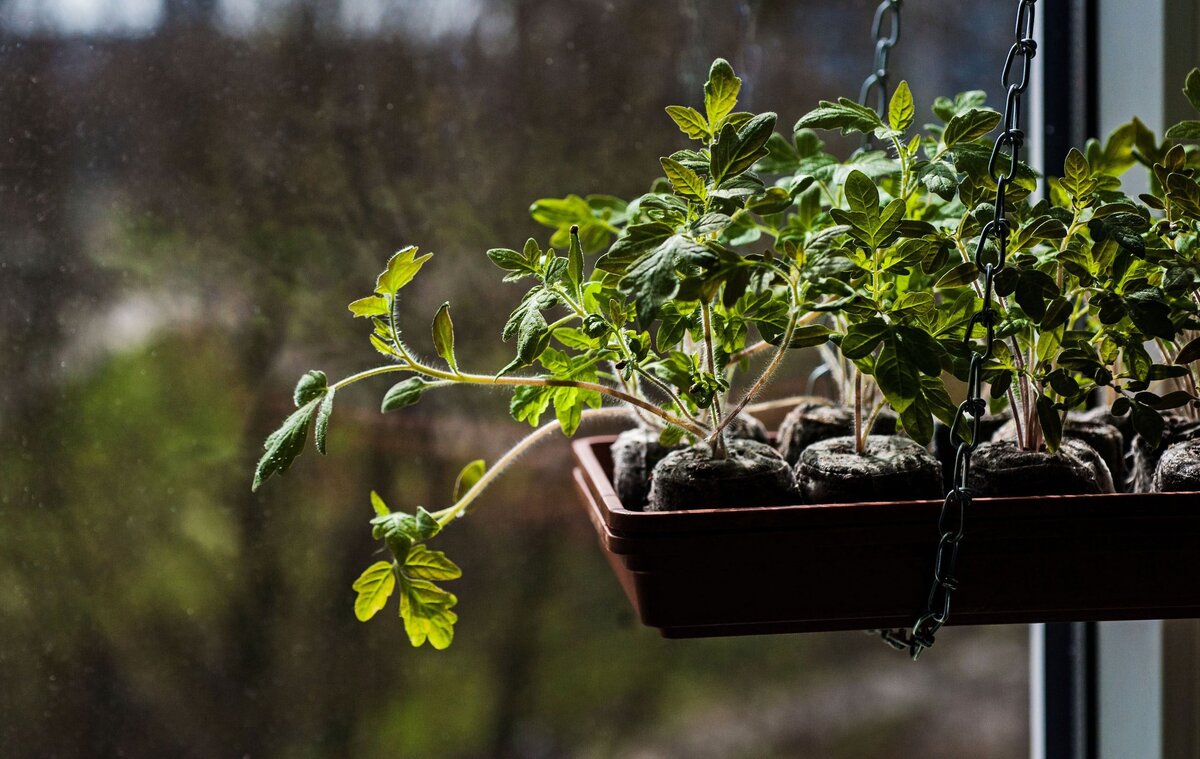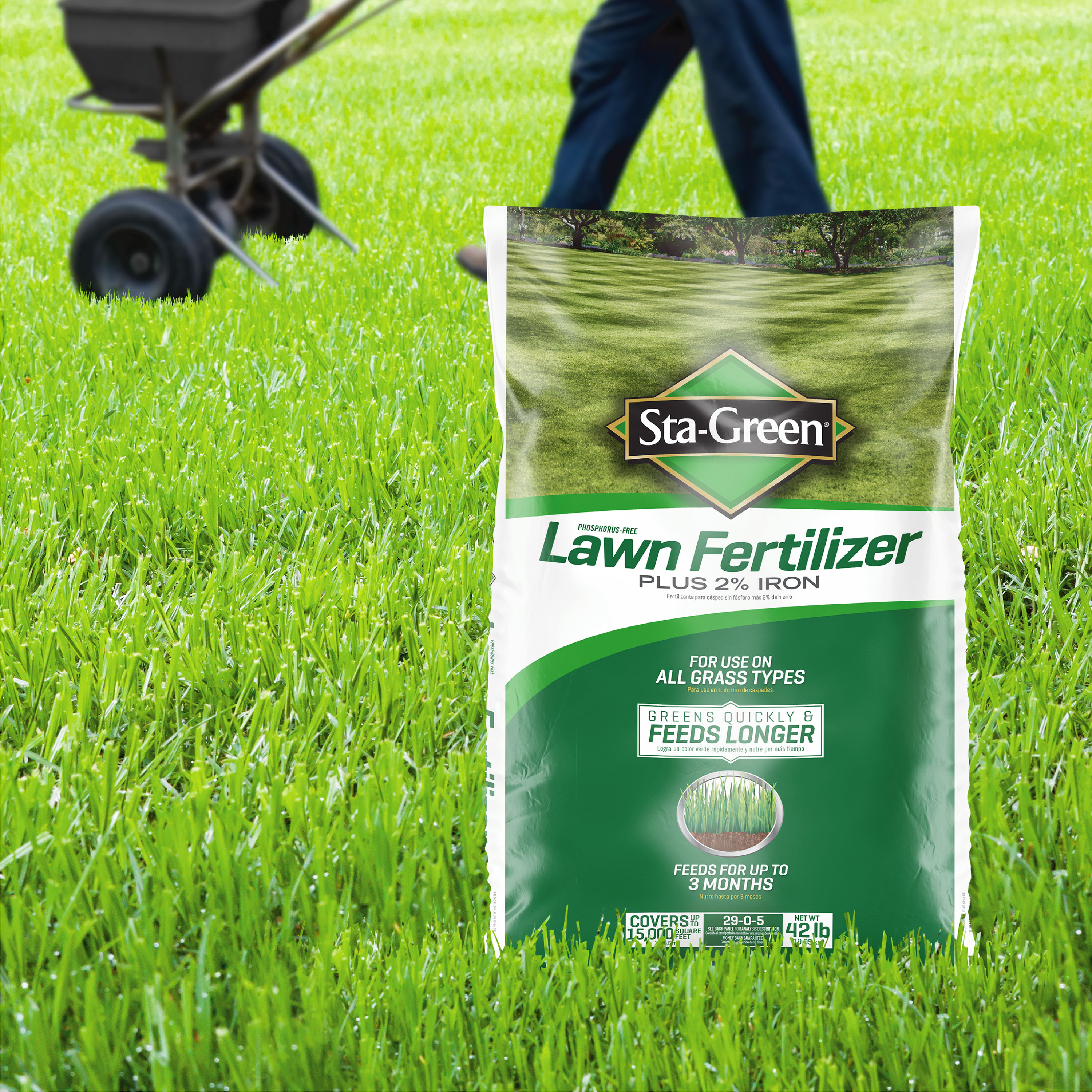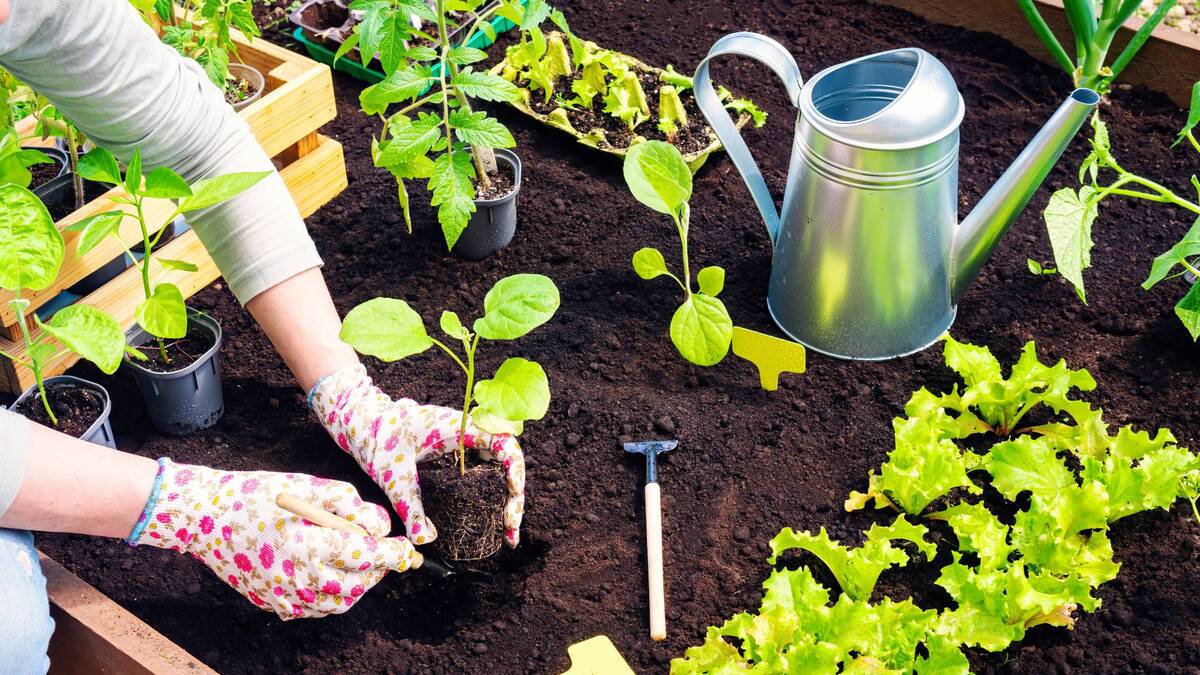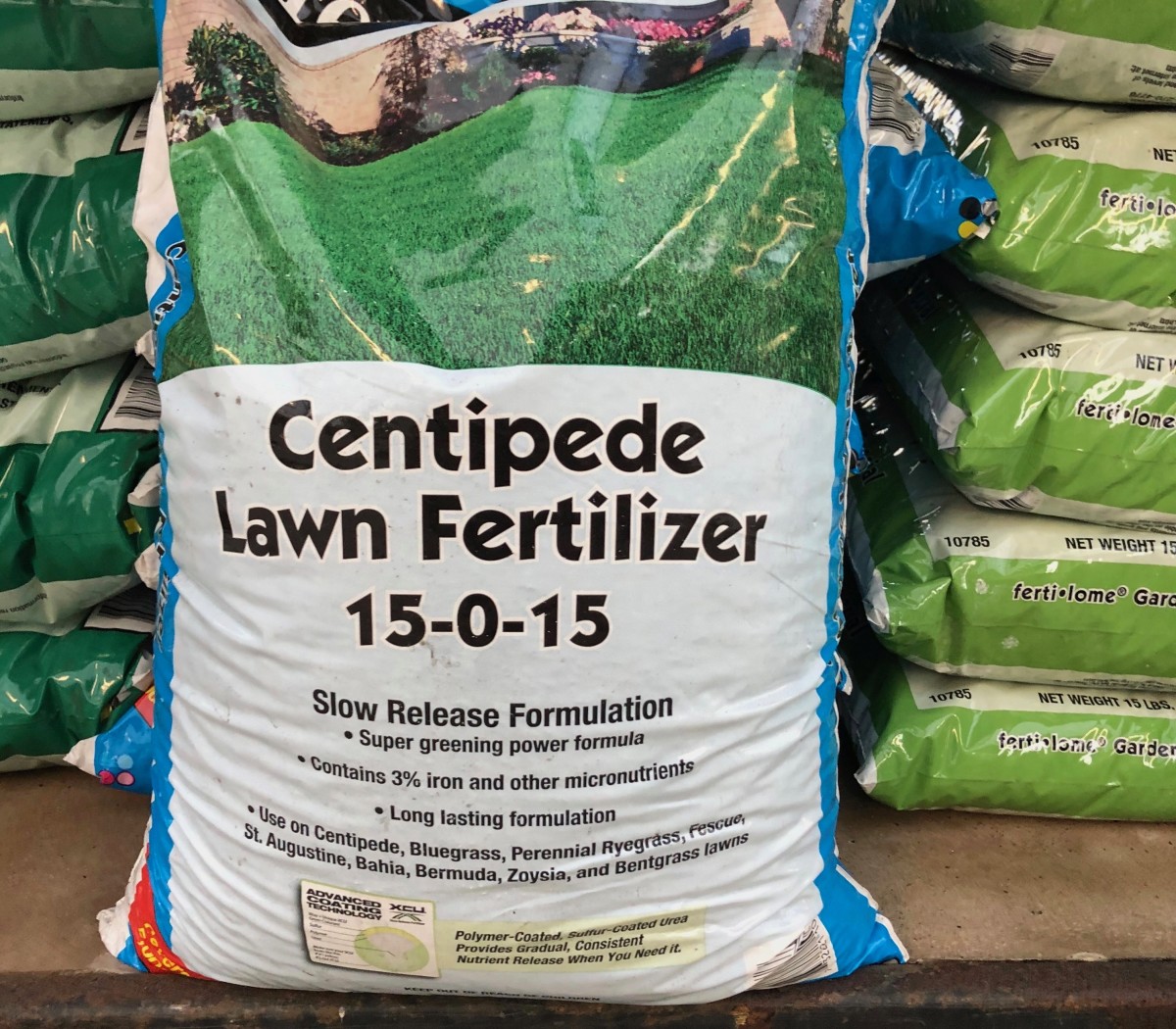Home>Gardening Techniques>Plant Care>When To Fertilize New Grass Seedlings
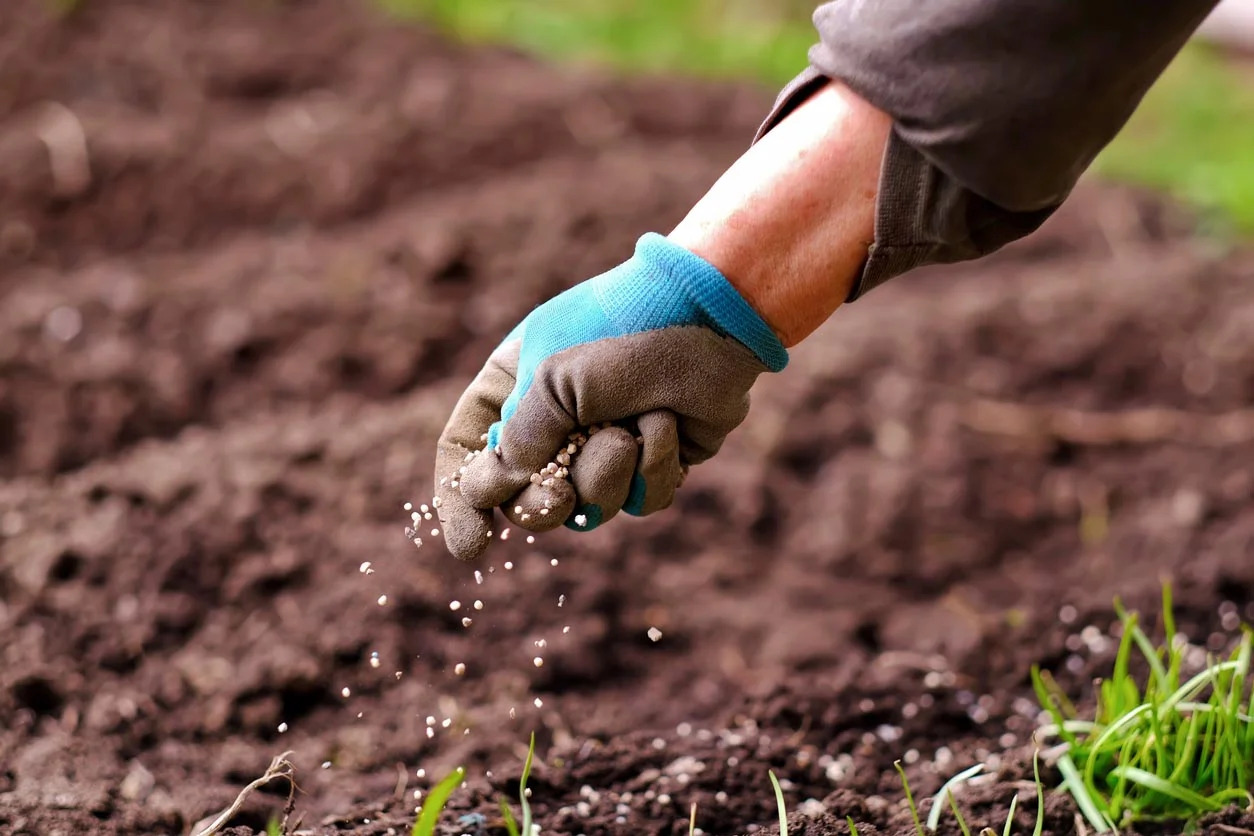

Plant Care
When To Fertilize New Grass Seedlings
Modified: January 22, 2024
Learn when to fertilize your new grass seedlings for optimal plant care. Discover the best time to nourish your growing grass to ensure healthy and vibrant results.
(Many of the links in this article redirect to a specific reviewed product. Your purchase of these products through affiliate links helps to generate commission for Chicagolandgardening.com, at no extra cost. Learn more)
Table of Contents
- Introduction
- Understanding New Grass Seedlings
- Importance of Fertilizing New Grass Seedlings
- Factors to Consider Before Fertilizing New Grass Seedlings
- Best Time to Fertilize New Grass Seedlings
- Types of Fertilizers for New Grass Seedlings
- Proper Application Techniques for Fertilizing New Grass Seedlings
- Common Mistakes to Avoid When Fertilizing New Grass Seedlings
- Signs of Over-Fertilization in New Grass Seedlings
- Conclusion
Introduction
Welcome to the world of gardening and plant care! Whether you are a seasoned green thumb or just starting on your gardening journey, knowing how to care for your plants is essential for their growth and overall health. One crucial aspect of plant care is understanding when and how to fertilize your plants, particularly new grass seedlings.
New grass seedlings are delicate and require proper nourishment to establish strong roots and grow into lush, healthy turf. Fertilizing at the right time and with the appropriate nutrients can significantly impact the success of your lawn.
In this article, we will explore the importance of fertilizing new grass seedlings, factors to consider before fertilizing, the best time to fertilize, different types of fertilizers suitable for new grass seedlings, proper application techniques, common mistakes to avoid, and signs of over-fertilization. By the end, you will have a comprehensive understanding of how to care for your new grass seedlings and ensure their long-term health.
Understanding New Grass Seedlings
Before we dive into the details of fertilizing new grass seedlings, let’s take a moment to understand what they are and how they differ from established lawns.
New grass seedlings are young, tender grass plants that have recently sprouted from seeds. They are in their early stages of growth and are more susceptible to stress and damage compared to mature, established grass. These seedlings require extra care and attention to ensure proper development.
Unlike established lawns, new grass seedlings have yet to develop a robust root system that can extract nutrients efficiently from the soil. This reliance on external sources of nutrients is why fertilizing becomes crucial in the early stages of their growth. By providing the right nutrients, you can support the seedlings’ establishment, root development, and overall health.
Understanding the specific needs of new grass seedlings is essential for successful fertilization. Each type of grass has unique characteristics and requirements, so it’s important to identify the specific variety of grass you are growing. Factors such as grass type, soil composition, climate, and local growing conditions all play a role in determining the nutrient needs of your grass seedlings.
Additionally, it’s worth mentioning that new grass seedlings are more vulnerable to over-fertilization. Applying too much fertilizer can cause nitrogen burn, where the grass leaves turn yellow or brown due to excessive nitrogen content. Therefore, it’s vital to strike a balance and provide the necessary nutrients without overwhelming the young seedlings.
Now that we have a basic understanding of what new grass seedlings are and their unique needs, let’s move on to explore the importance of fertilizing these delicate plants.
Importance of Fertilizing New Grass Seedlings
Fertilizing new grass seedlings is a critical step in ensuring their healthy growth and development. Here are some key reasons why fertilization is important for these delicate plants:
1. Nutrient Supply: New grass seedlings have limited access to nutrients in the soil due to their immature root systems. Fertilizers provide a concentrated source of essential nutrients like nitrogen, phosphorus, and potassium, which are vital for the seedlings to thrive. By fertilizing, you are supplementing the seedlings with the necessary nutrients they need for robust growth.
2. Root Development: The root system is the foundation of any plant, including grass. Fertilizers rich in phosphorus help promote strong root development in new grass seedlings. Well-developed roots allow the plants to anchor firmly in the soil, absorb water and nutrients more efficiently, and withstand environmental stresses such as drought or foot traffic.
3. Overall Health: Fertilizing new grass seedlings improves their overall health and helps them resist diseases, weeds, and pests. Well-nourished plants are better equipped to fight off common lawn issues and recover more quickly from any damage they may encounter.
4. Faster Establishment: Fertilization accelerates the establishment process of new grass seedlings. By providing the right nutrients at the right time, you can promote faster growth and development, resulting in a lush and dense lawn in a shorter period.
5. Uniformity and Aesthetics: Proper fertilization ensures that the new grass seedlings grow evenly and achieve a uniform appearance. This is particularly important if you are aiming for an attractive and well-maintained lawn. Fertilizers help prevent patchy growth and promote a more cohesive look.
It is important to note that while fertilizing is crucial, it is equally important to use the appropriate type and amount of fertilizer. Over-fertilization can harm new grass seedlings, leading to burn or stunted growth. Next, we will discuss the factors you should consider before fertilizing to ensure the health and success of your grass seedlings.
Factors to Consider Before Fertilizing New Grass Seedlings
Before fertilizing your new grass seedlings, there are several key factors that you should take into consideration. These factors will help you determine the most appropriate fertilization approach for your specific lawn. Let’s explore these factors in detail:
1. Grass Type: Different grass types have varying nutrient requirements. It’s important to know the specific type of grass you are growing, as this will determine the kind of fertilizer and nutrients needed. Cool-season grasses, such as Kentucky bluegrass or fescue, have different needs compared to warm-season grasses like Bermuda grass or Zoysia grass.
2. Soil Analysis: Conducting a soil analysis is crucial before fertilizing. A soil test helps identify the pH level, nutrient deficiencies, and soil composition. This information will guide you in selecting the right fertilizer and adjusting the pH of the soil if necessary.
3. Timing: Timing is key when it comes to fertilizing new grass seedlings. It’s important to wait until the grass seedlings have established a strong root system before applying fertilizer. Applying fertilizer too early can stress the young seedlings. Typically, it is recommended to wait until the seedlings have been mowed two to three times before fertilizing.
4. Environmental Conditions: Consider the climate and weather conditions in your area. Extreme heat, drought, or heavy rainfall can affect the efficacy of fertilizers. It’s best to fertilize when there is moderate temperature and moderate soil moisture to ensure that the nutrients are absorbed effectively.
5. Fertilizer Formulation: Different fertilizers come in various formulations, such as granular, liquid, or slow-release. Each formulation has its advantages and disadvantages. Granular fertilizers are easy to apply and provide a slow release of nutrients over time, while liquid fertilizers offer quick absorption. Consider the pros and cons of each formulation and choose the one that suits your needs and application preferences.
6. Application Rate: Proper application rate is crucial to avoid over-fertilization. Follow the recommended dosage as indicated on the fertilizer packaging. Applying too much fertilizer can harm the grass seedlings and lead to nutrient burn.
7. Watering: Adequate watering is essential after fertilizer application to ensure proper nutrient absorption by the grass seedlings. Watering helps move the nutrients into the soil and encourages deep root growth. Be mindful of overwatering as it can also cause nutrient leaching and potential damage to the seedlings.
By considering these factors before fertilizing, you can ensure that your new grass seedlings receive the right nutrients at the right time, promoting healthy growth and overall lawn vitality.
Best Time to Fertilize New Grass Seedlings
The timing of fertilizer application is crucial when it comes to nourishing new grass seedlings. Applying fertilizer at the right time ensures optimal nutrient uptake and promotes healthy growth. Here are some guidelines to determine the best time to fertilize your new grass seedlings:
1. Established Root System: It’s essential to wait until the grass seedlings have established a strong root system before applying fertilizer. This usually occurs when the seedlings have been mowed two to three times. Fertilizing too early can stress the young plants and hinder their root development.
2. Early Spring or Fall: The best time to fertilize new grass seedlings is during early spring or fall. These seasons provide favorable temperatures and growing conditions for the seedlings. Fertilizing early in spring helps kickstart growth after winter dormancy, while fall fertilization promotes root development and prepares the grass for winter dormancy.
3. Avoid Extreme Temperatures: It’s important to avoid fertilizing during periods of extreme heat or cold. High temperatures can cause the fertilizer to burn the grass and damage the delicate seedlings. Similarly, fertilizing when the ground is frozen or when there is the potential for frost can impede nutrient absorption and harm the seedlings.
4. Moderate Moisture Content: Fertilizing when the soil has a moderate moisture content is ideal. Avoid fertilizing during periods of heavy rainfall or drought, as excessive moisture or drought stress can affect nutrient absorption and efficacy. It’s best to wait until the soil is moderately moist but not saturated.
5. Consider Grass Type: Different grass types have specific growth patterns and nutrient needs, which can affect the timing of fertilizer application. Cool-season grasses, such as Kentucky bluegrass or fescue, benefit from fertilization in early spring and early fall. Warm-season grasses like Bermuda grass or Zoysia grass thrive with fertilization during late spring and early summer.
6. Read the Instructions: Always read and follow the instructions on the fertilizer packaging. Manufacturers often provide specific recommendations on the best time to apply their product based on regional and grass type considerations. These instructions will guide you in determining the most suitable timing for fertilizing your new grass seedlings.
By fertilizing your new grass seedlings at the right time, you can ensure that they receive the necessary nutrients to establish a healthy and vibrant lawn.
Types of Fertilizers for New Grass Seedlings
Choosing the right type of fertilizer for your new grass seedlings is crucial for providing them with the necessary nutrients for healthy growth. There are various types of fertilizers available, each with its own formulation and nutrient content. Let’s explore some common types of fertilizers suitable for new grass seedlings:
1. Complete Fertilizers: Complete fertilizers, also known as balanced fertilizers, contain a blend of nitrogen (N), phosphorus (P), and potassium (K) in a balanced ratio. These nutrients are essential for overall plant development, with nitrogen promoting leaf and stem growth, phosphorus supporting root development, and potassium enhancing disease resistance and overall plant health. Look for a complete fertilizer with an N-P-K ratio appropriate for your grass type and follow the recommended application rates.
2. Starter Fertilizers: Starter fertilizers are specifically designed for new grass seedlings and young plants. They have a higher phosphorus content to promote strong root development and early growth. Starter fertilizers can provide an extra boost to help your new grass seedlings establish quickly and develop a robust root system. These fertilizers often have an N-P-K ratio like 10-20-10 or 18-24-6, with the higher phosphorus content being the distinguishing factor.
3. Organic Fertilizers: Organic fertilizers are derived from natural sources, such as animal manure, compost, or plant-based products. They provide a slow release of nutrients and improve soil structure and nutrient retention over time. Organic fertilizers are generally considered environmentally-friendly and can enhance the long-term health and fertility of the soil. However, they may take longer to see the desired results compared to synthetic fertilizers.
4. Controlled-Release Fertilizers: Controlled-release fertilizers, also known as slow-release fertilizers, provide a steady supply of nutrients to the grass seedlings over an extended period. These fertilizers are typically in granular form and have a coating that releases nutrients gradually in response to soil moisture and temperature. Controlled-release fertilizers are convenient because they reduce the frequency of fertilizer applications, providing a consistent nutrient supply while minimizing the risk of over-fertilization.
5. Liquid Fertilizers: Liquid fertilizers are fast-acting and quickly absorbed by the grass seedlings through their leaves and roots. They are typically mixed with water and applied using a sprayer or irrigation system. Liquid fertilizers are ideal for providing a quick nutrient boost to new grass seedlings. However, their effects may not last as long as granular or controlled-release fertilizers, so they may require more frequent applications.
When selecting a fertilizer, consider your specific grass type, soil conditions, and the desired growth objectives. It’s also important to follow the instructions provided by the manufacturer regarding application rates and frequencies. By choosing the right type of fertilizer, you can ensure that your new grass seedlings receive the nutrients they need for healthy and vigorous growth.
Proper Application Techniques for Fertilizing New Grass Seedlings
Applying fertilizer correctly is essential to ensure that your new grass seedlings receive the proper nutrients without causing harm. Here are some proper application techniques to follow when fertilizing your new grass seedlings:
1. Measure and Calculate: Start by measuring the area of your lawn to determine the amount of fertilizer needed. You can use a measuring wheel or a simple tape measure to get an accurate measurement. Then, calculate the recommended application rate based on the fertilizer packaging or the instructions provided by a professional.
2. Spread Evenly: Use a spreader or a handheld fertilizer spreader to evenly distribute the fertilizer across the lawn. This ensures uniform coverage and prevents over-fertilization in certain areas. Follow the manufacturer’s instructions for the spreader settings to ensure the correct distribution rate.
3. Avoid Overlapping: Pay attention to your movements while spreading the fertilizer and avoid overlapping. Overlapping can lead to uneven distribution and result in areas of the lawn receiving too much fertilizer. Remember that over-fertilization can cause damage to the new grass seedlings.
4. Water Immediately: After applying the fertilizer, water your lawn immediately. This helps to activate the nutrients and move them into the soil, making them accessible to the grass seedlings. Watering also prevents the fertilizer from burning the grass blades. Apply enough water to moisten the soil to a depth of approximately 6 inches.
5. Timing is Key: It’s best to fertilize early in the morning or late in the afternoon when the temperature is cool and the wind is calm. This helps to minimize stress on the grass seedlings and avoid rapid evaporation of the water applied after fertilization.
6. Follow Local Regulations: Be aware of any local regulations or restrictions regarding fertilizer application. Some areas have specific guidelines to protect water bodies from runoff and nutrient pollution. Familiarize yourself with these regulations and adhere to them to ensure environmental responsibility.
7. Don’t Forget Protective Gear: When handling fertilizers, it’s important to protect yourself. Wear gloves, long sleeves, long pants, and closed-toe shoes to prevent direct contact with the fertilizer. Wash your hands and any exposed skin thoroughly after handling fertilizers.
Following these proper application techniques will help you fertilize your new grass seedlings effectively and minimize the risk of over-fertilization or damage. Remember to always read and follow the instructions provided by the manufacturer for the specific fertilizer you are using.
Common Mistakes to Avoid When Fertilizing New Grass Seedlings
Fertilizing new grass seedlings is an important step in their growth and establishment. However, there are several common mistakes that people often make when fertilizing, which can have negative effects on the health of the seedlings and the overall success of your lawn. Here are some common mistakes to avoid:
1. Over-Fertilization: Applying too much fertilizer is one of the most common mistakes. Over-fertilization can result in nutrient burn, where the grass turns yellow or brown due to excessive nitrogen content. Always follow the recommended application rates specified on the fertilizer packaging to avoid over-fertilizing.
2. Uneven Application: Unevenly distributing the fertilizer can lead to uneven growth and patchiness in your lawn. Use a spreader to ensure even coverage and avoid overlapping when applying the fertilizer. This will help maintain a consistent and healthy appearance across your lawn.
3. Applying Fertilizer to Wet Grass: Applying fertilizer to wet grass can cause the granules to stick to the blades, leading to potential burning or damaging of the seedlings. Make sure the grass is dry before applying the fertilizer, and if necessary, wait until the morning dew has evaporated or the rain has stopped.
4. Fertilizing During Extreme Weather: Fertilizing new grass seedlings during periods of extreme heat or cold can be detrimental to their health. High temperatures can increase the risk of fertilizer burn, while freezing temperatures can hinder nutrient absorption. Choose to fertilize when the weather is moderate and the soil conditions are favorable.
5. Neglecting Soil Preparation: Proper soil preparation is crucial for the success of your new grass seedlings. Fertilizing alone is not enough if the soil is compacted or lacks essential nutrients. Prior to fertilization, ensure that the soil is well-aerated, and consider conducting a soil test to determine if any amendments are needed.
6. Fertilizing Too Early: Applying fertilizer too early in the growth process of your grass seedlings can put unnecessary stress on them. Allow the seedlings to establish a strong root system and be mowed a few times before applying fertilizer. This will ensure that they are better equipped to absorb and utilize the nutrients.
7. Not Following Instructions: Each type of fertilizer may have specific instructions regarding application rates, timing, and other important details. Not following these instructions may result in poor or ineffective fertilization. Take the time to read and understand the instructions provided by the manufacturer to achieve the best results.
By avoiding these common mistakes, you can ensure that your new grass seedlings receive the right amount of fertilizer at the right time, promoting their healthy growth and establishment.
Signs of Over-Fertilization in New Grass Seedlings
While fertilizing new grass seedlings is crucial for their growth and health, over-fertilization can have negative consequences. It’s essential to be able to recognize the signs of over-fertilization so that you can take corrective action. Here are some common signs to look out for:
1. Yellowing or Browning Grass: One of the most noticeable signs of over-fertilization is when the grass blades turn yellow or brown. This discoloration, known as nutrient burn, is primarily caused by excessive nitrogen. The grass may also appear wilted or have a burned appearance.
2. Slow Growth or Stunted Development: Over-fertilization can hinder the growth and development of new grass seedlings. Instead of a healthy and vigorous growth pattern, the grass may appear stunted or fail to grow altogether. If the seedlings seem to be lacking progress despite favorable conditions, over-fertilization may be the culprit.
3. Thinning or Patchy Grass: Over-fertilization can result in uneven growth or patchiness across your lawn. Some areas may become excessively lush and dense, while others may show signs of decline. This imbalance can lead to an unattractive and inconsistent appearance.
4. Excessive Weed Growth: Over-fertilized lawns tend to promote the growth of weeds. The high levels of nutrients can encourage weed seeds to germinate and grow rapidly, outcompeting the new grass seedlings for sunlight, water, and nutrients. If you notice an influx of weeds in your lawn, it may be an indication of over-fertilization.
5. Increased Susceptibility to Disease and Pests: Over-fertilization weakens the overall health and resilience of new grass seedlings, making them more susceptible to diseases and pests. The imbalance of nutrients can disrupt the natural defense mechanisms of the grass, leaving it more vulnerable to pathogens and insect damage.
6. Excessive Thatch Buildup: Thatch is a layer of dead grass stems and roots that accumulates on the soil’s surface. Over-fertilization can contribute to excessive thatch buildup, as the grass grows too quickly and sheds excessive biomass. A thick thatch layer can restrict water and nutrient uptake, leading to further stress on the new grass seedlings.
If you notice any of these signs of over-fertilization in your new grass seedlings, it’s important to take immediate action. The first step is to stop applying any additional fertilizer. Next, thoroughly water your lawn to help flush out the excess nutrients and dilute their concentration in the soil. Monitoring the grass and adjusting your fertilization practices accordingly can help restore the health and balance of the lawn.
Conclusion
Fertilizing new grass seedlings is a crucial aspect of lawn care that can significantly impact their growth, health, and overall appearance. By understanding the needs of your grass seedlings and implementing proper fertilization techniques, you can ensure their successful establishment and long-term vitality.
Throughout this article, we have explored various aspects of fertilizing new grass seedlings. We started by understanding the nature of new grass seedlings and their unique requirements. We then delved into the importance of fertilizing, considering factors such as grass type, soil analysis, timing, environmental conditions, and fertilizer formulation.
We discussed the different types of fertilizers suitable for new grass seedlings, including complete fertilizers, starter fertilizers, organic fertilizers, controlled-release fertilizers, and liquid fertilizers. Each type offers specific benefits and considerations, enabling you to choose the most appropriate option for your lawn.
We also highlighted the importance of proper application techniques to avoid common mistakes, such as over-fertilization, uneven application, and improper timing. Following these techniques ensures that the fertilizers are distributed evenly, absorbed effectively, and do not harm the new grass seedlings or the environment.
Lastly, we explored the signs of over-fertilization in new grass seedlings and the importance of recognizing these signs to take corrective action promptly. When done correctly, fertilizing plays a vital role in supporting the growth, root development, and overall health of your new grass seedlings.
Remember, every lawn has its unique needs, so it’s important to consider the specific requirements of your grass type, local climate, and soil conditions when fertilizing. Regular monitoring of your lawn, proper maintenance, and adjusting your fertilization practices as needed will ensure the long-term success and beauty of your lawn.
